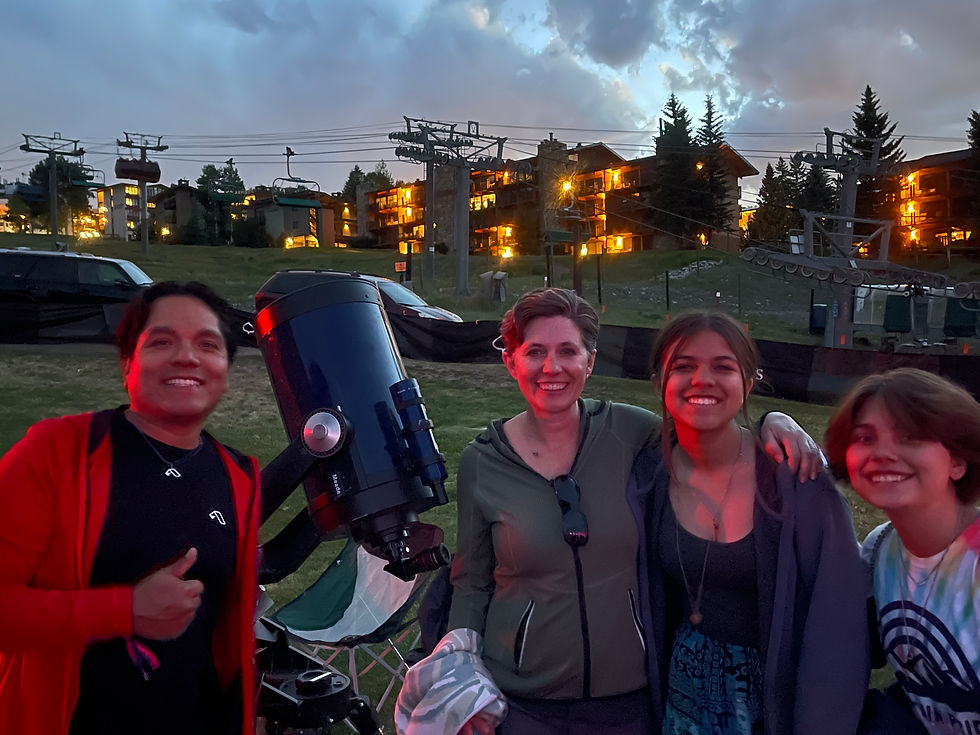Your Colorado Guide to the 2024 Total Solar Eclipse: Witnessing the Celestial Spectacle Safely
- Luke

- Mar 31, 2024
- 2 min read
On April 8, 2024, a spectacular celestial event will grace the skies of North America - a total solar eclipse. This rare event occurs when the Moon passes directly between the Earth and the Sun, completely obscuring the Sun’s face. This blog post will guide you on how to safely experience this astronomical wonder, especially for those in Colorado and beyond.

What to Expect:
This total solar eclipse will be the last one visible from the contiguous United States until 2044, making it a must-see event. The eclipse will first touch North America in Mexico and then travel through the United States, from Texas to Maine, before heading into Canada. In locations along the path of totality, observers will experience a dramatic dimming of the sky, resembling dawn or dusk.
Unfortunately, Colorado is not in the path of totality, meaning that observers in this area will witness only a partial eclipse, where the Sun will be obscured more than 50%. However, it's still an opportunity to engage in this unique astronomical event.

Safety Guidelines:
Safety is paramount when observing a solar eclipse. The Sun's rays can cause severe eye damage without proper protection. Here’s what you need to know:
Eclipse Glasses: During the partial phases of the eclipse, it is essential to wear eclipse glasses. These are not regular sunglasses; they must comply with the ISO 12312-2 international standard for safe solar viewing.
Inspect Your Glasses: Ensure that your eclipse glasses or solar viewers are not damaged, scratched, or torn before use.
Indirect Viewing: If you don’t have eclipse glasses, use indirect viewing methods like a pinhole projector, which allows you to project the image of the Sun onto a surface.
Optical Devices: Never look at the Sun through a camera, telescope, or binoculars without a solar filter. These filters should be mounted on the front of the device.
During Totality: Only during the brief total phase of the eclipse (not visible in Colorado) is it safe to view the eclipse directly without eye protection.

Where to View:
For those in Colorado, while you won’t experience totality, there are still many locations to enjoy the partial eclipse. Consider high elevation sites for a clearer view or join a community event where telescopes and solar filters might be available for a closer look.
For those seeking the full experience of totality, a trip out of Colorado to the states in the path, such as Texas or Ohio, is necessary. Plan your trip well in advance, as these events attract large crowds.
Conclusion:
The 2024 total solar eclipse is an opportunity to connect with the cosmos and witness a remarkable natural phenomenon. Whether you’re in the path of totality or observing a partial eclipse from Colorado, remember to prioritize safety and cherish this rare moment. For more information and guidance, visit AstroTours.org or contact us to learn about our eclipse-viewing events and programs.
Stay Safe, Stay Curious, and Happy Stargazing!
References:
NASA - Total Solar Eclipse of 2024: NASA's Official Eclipse Page
Great American Eclipse, LLC: Eclipse Maps and Information
AstroTours.org - Bringing the Universe Closer to You

.png)


Comments